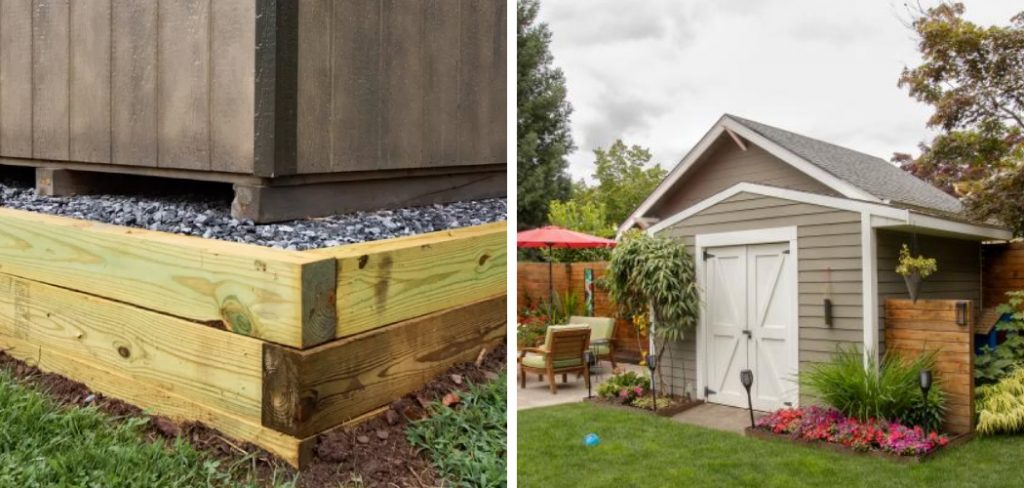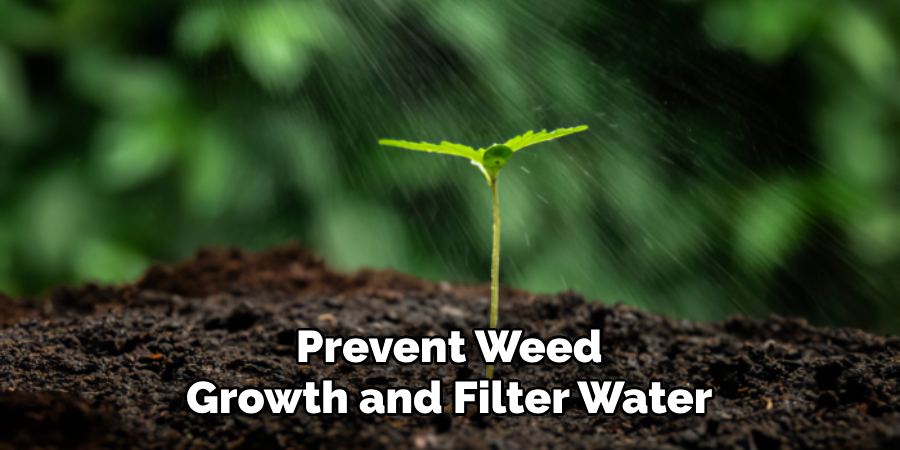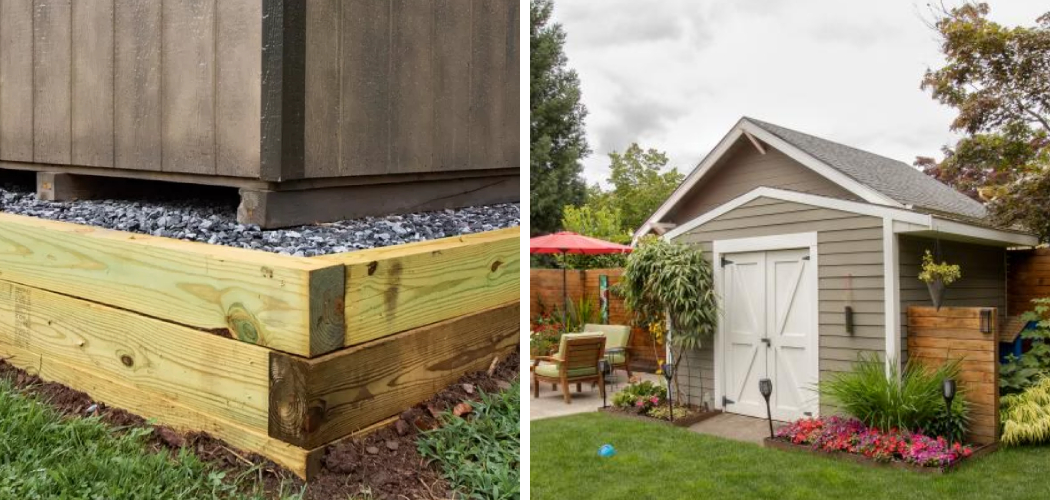To block off under a garden shed, clear the area of debris and vegetation, measure the space, cut plywood to fit the opening, and secure it in place with screws. A garden shed is a valuable storage space for garden tools and other equipment.
However, to ensure that your shed remains protected and your belongings are secure, it is important to block off the area under the shed. This prevents animals, insects, and moisture from entering and causing damage. In order to achieve this, start by clearing any debris or vegetation from the area.
Next, measure the space that needs to be blocked off. Cut a piece of plywood to fit the opening and then secure it with screws to create a barrier. By following these steps, you can effectively block off under your garden shed and maintain a clean and organized space.

How to Block off under Garden Shed: Step by Step Guide
Insulating And Securing Your Garden Shed
Insulating and securing your garden shed is crucial in maintaining its durability and protecting your belongings. By insulating your shed, you create a barrier that keeps the temperature stable, preventing moisture and extreme weather conditions from causing damage. This helps to preserve the shed’s structural integrity and extends its lifespan.
Additionally, insulating your garden shed offers energy efficiency, making it more cost-effective in the long run. Furthermore, securing the area beneath your shed is equally important. This prevents animals from nesting or causing damage to the shed. It also keeps pests away and prevents the growth of weeds or unwanted plants.
By following these steps to insulate your garden shed and securing the area beneath it, you can ensure its longevity and keep your belongings safe. So, don’t neglect the importance of these measures for your garden shed.
Building A Foundation For Your Garden Shed
Building a solid foundation for your garden shed is crucial for its durability and stability. A strong foundation prevents the shed from sinking or shifting over time. To start, gather the necessary materials such as concrete blocks or gravel, depending on your preference.
Begin the construction process by leveling the ground where the shed will be placed. This will ensure a flat and even foundation. Lay down the concrete blocks or gravel in a grid pattern and double-check for levelness at each step.
Carefully adhere to these guidelines to achieve a sturdy foundation that will support your garden shed for years to come. Remember, a solid foundation is the key to a successful and long-lasting garden shed.
Creating A Barrier For Pests And Critters
Creating a barrier for pests and critters is crucial when it comes to blocking off under your garden shed. By keeping these unwanted visitors out, you can protect your garden tools and equipment from damage. One diy method is to use hardware cloth or wire mesh to cover the openings.
This will prevent pests from burrowing into the area. Another option is to use natural deterrents like peppermint oil or vinegar, which repel pests. However, if you are dealing with a severe infestation, it’s best to seek professional pest control services.
They have the expertise and tools to effectively eliminate pests and prevent future infestations. By taking these measures, you can ensure that your garden shed remains pest-free and protected.
Adding Ventilation To Your Garden Shed
Adding proper ventilation to your garden shed is crucial. Good ventilation prevents moisture buildup and keeps the shed free from mold and mildew. It also helps to control the temperature inside, preventing it from becoming too hot and stuffy. There are various options for ventilation, such as installing windows or vents.
Windows not only allow fresh air to enter but also bring in natural light. Vents, on the other hand, are specially designed to promote air circulation. When installing ventilation systems, ensure they are strategically placed to maximize airflow. Consider the shed’s size and layout for effective ventilation.
A well-ventilated garden shed will provide a healthier environment for storing gardening tools, equipment, and other items. So, don’t overlook the importance of proper ventilation in your garden shed.
Maintaining And Upgrading Your Blocked-Off Space
Maintaining and upgrading the blocked-off space under your garden shed requires regular maintenance to prevent any issues or damages. Periodic inspections are important to identify any necessary repairs or damages that may have occurred over time. By adhering to these maintenance tips, you can enhance the blocked-off space and ensure its longevity.
Avoid starting with commonly overused phrases and aim for brief sentences that are easy to understand. Additionally, using a variety of expressions at the beginning of paragraphs will keep the reader engaged. Remember to write in an seo-friendly and unique manner, while also sounding human-like.
Finally, skip the conclusion paragraph and focus on providing valuable information throughout the article.
Frequently Asked Questions On How To Block Off Under Garden Shed
How Can I Block Off The Space Under My Garden Shed?
To block off the space under your garden shed, you can use a range of materials like concrete blocks, wood, or lattice. Create a barrier around the shed’s perimeter using these materials to prevent animals from entering and to add stability to the structure.
What Are The Benefits Of Blocking Off The Space Under A Garden Shed?
Blocking off the space under a garden shed can help prevent unwanted pests, such as rodents and snakes, from nesting under the shed. It also helps to keep the shed more stable by adding support and preventing soil erosion. Additionally, it improves the overall appearance of your garden.
Can I Use Landscape Fabric To Block Off Under My Garden Shed?
Yes, you can use landscape fabric to block off under your garden shed. Lay the fabric down on the ground under the shed, making sure to cover the entire area. This will help to prevent weed growth and filter water, while still allowing for proper drainage.

Ensure the fabric is secured and does not have any gaps.
Conclusion
Blocking off the area under your garden shed is an essential step in maintaining the integrity and functionality of your outdoor space. By following the steps outlined in this guide, you can effectively keep pests and animals at bay, protect against water damage, and create a more clean and organized environment.
Remember to start by clearing the area and creating a solid foundation, then proceed to install a barrier like lattice or chicken wire. Additionally, consider incorporating gravel or concrete to further reinforce the space. Regular maintenance is key, so be sure to inspect for any signs of wear or damage and address them promptly.
With these tips in mind, you can take control of the space under your garden shed and enjoy the benefits of a beautiful and well-protected yard. Happy gardening!

